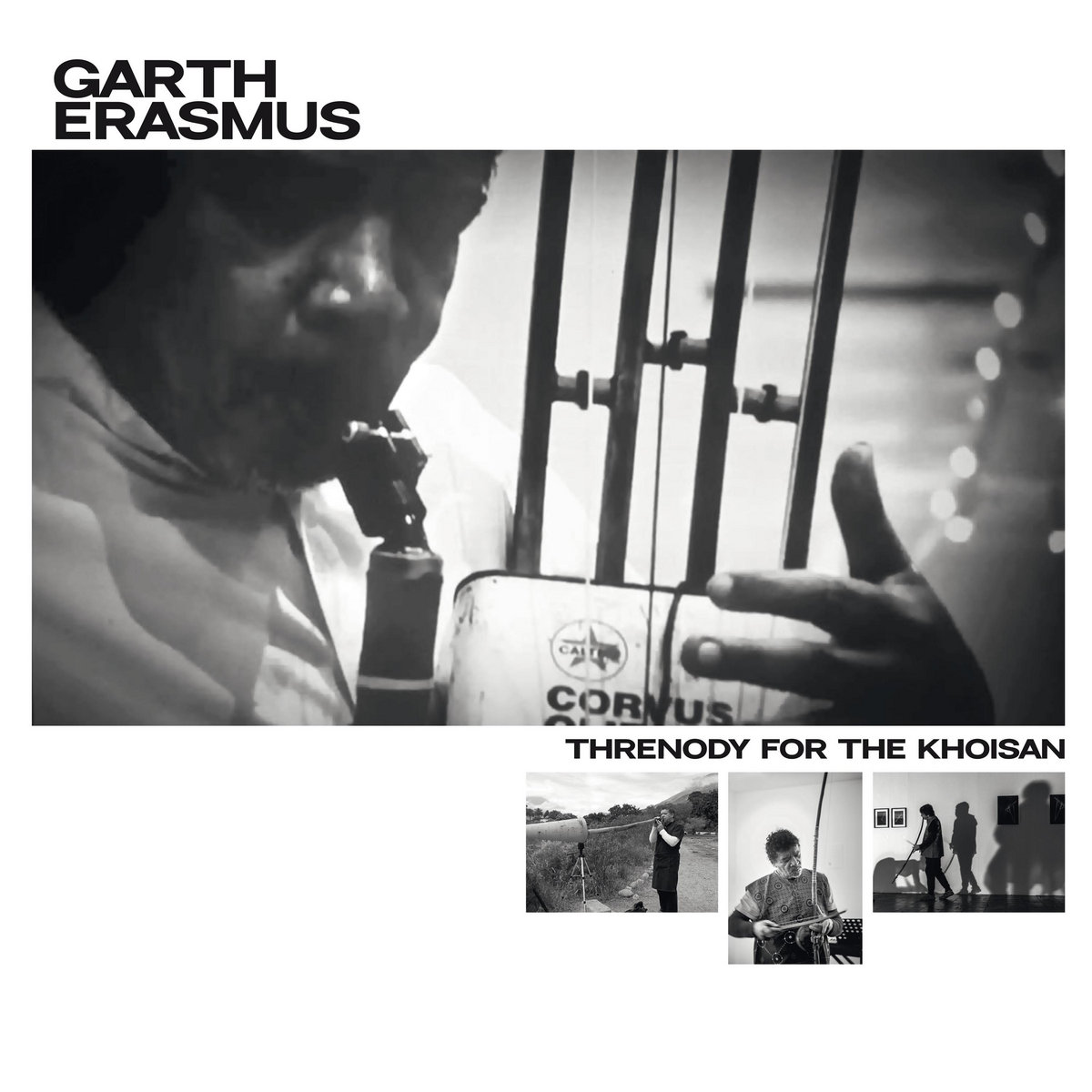In Kürze erscheint mit “Threnody for the KhoiSan” das erste unter seinem eigenen Namen veröffentlichte Album des südafrikanischen Künstlers und Musikers Garth Erasmus. In den Jahren um und nach der Jahrtausendwelde machte Erasmus, der währnd des Apartheitsregimes bereits als aktivistischer Künstler aktiv war, v.a. im Rahmen seiner zusammen mit Jethro Louw und Glen Arendse gegründeten Gruppe Knoi Khonnection von sich reden, mit denen er Musik, Performances und Ausstellungen – im deutschsprachigen Raum oft in Kollaboration mit der Band Kante – auf die Beine brachte. Sein Interesse an selbstgebauten Instrumenten, oft angelehnt an KhoiSan-Traditionen, und Field Recordings, zeichnet sich auch in “Threnody for the KhoiSan” ab. Wie Erasmus betont, haben diese ästhetischen Entscheidungen eine befreiende Funktion, wie es im begleittext heißt: “Ever since I was an art student I have experimented with alternative materials to release me from the Western education values I received. When I started to make these instruments in the 1980s, my intention was to create art objects but when I discovered the sound they made, it unlocked a door that transported me deeper in my quest in the realization that I was on the right path”. Das Album erschien jüngst beim Düsseldorfer TAL-Label.
“His works in music are predominantly characterized by a restless quest for alternative forms of expression and materials including self build instruments, field recordings or various electronic music devices. In this context the music on ‘Threnody for the KhoiSan’ takes on a primal and metaphorical meaning. Rather than a formal, physical initiation, this process is more spiritually inclined, yet it is a spirituality which is consistently put into action. [...] In fact all instruments which appear on ‘Threnody for the KhoiSan’ are products of a process of discovery starting from square one. All this is based and founded on the beauty of simplicity and minimalism as symbolized by the single string Khoisan musical bow and arrow as trance musical instrument. In this sense it soon became manisfest for Garth Erasmus to combine the bow instruments with various electronic instruments. Besides developing his own unique language in music he also shared an expressed interested in experimental sound aesthecis, Avantgarde composition and Free Jazz. However, his non – academic approach towards sound and music was always fueled by the desire for a reconnection to the land and to the idegenious knowledge of the KhoiSan, whose struggle for First Nation status continues”. (TAL)
